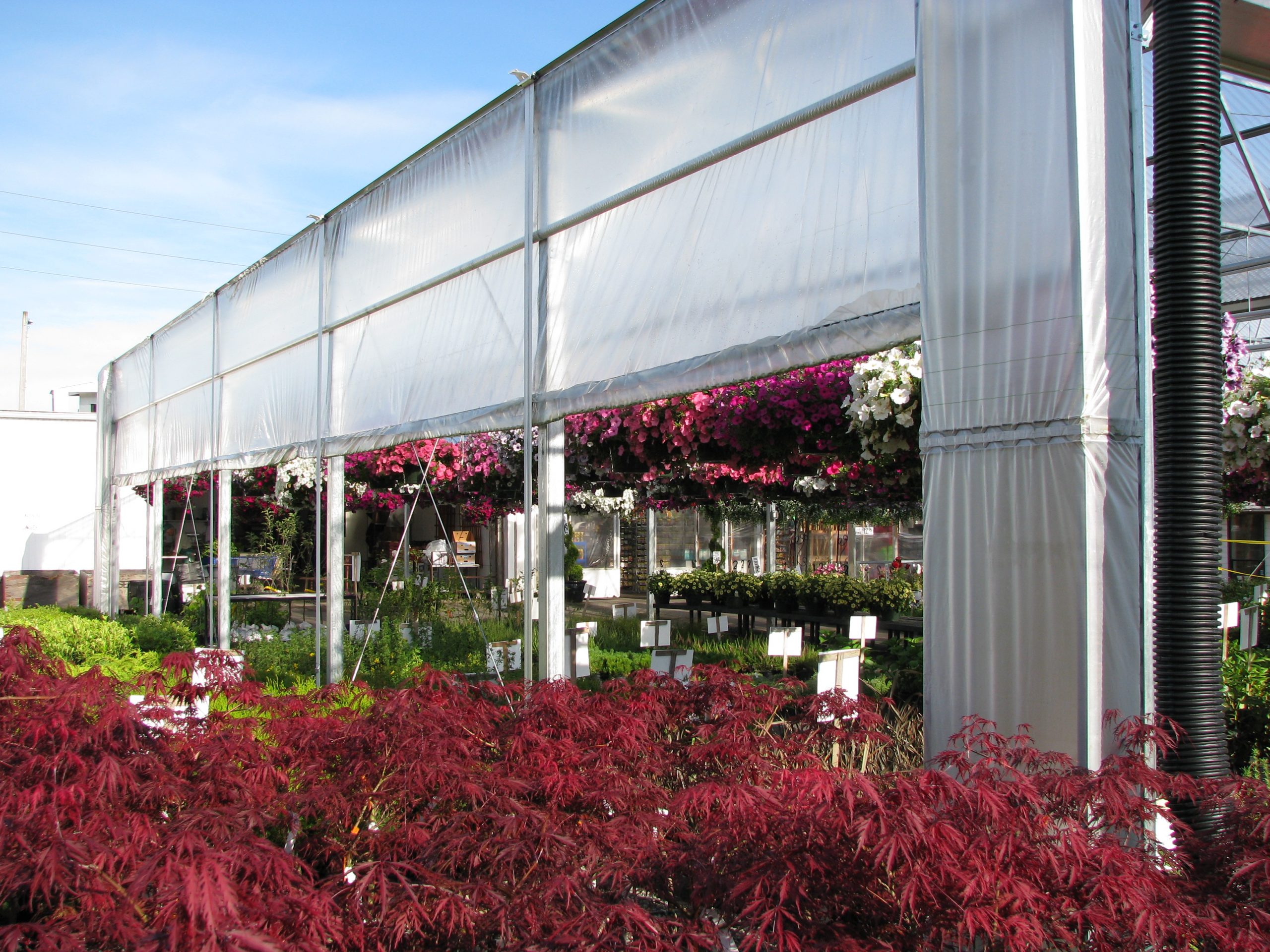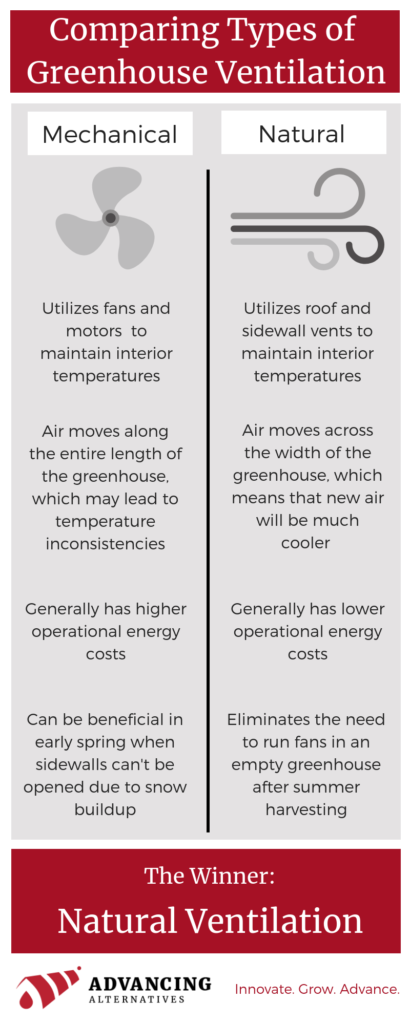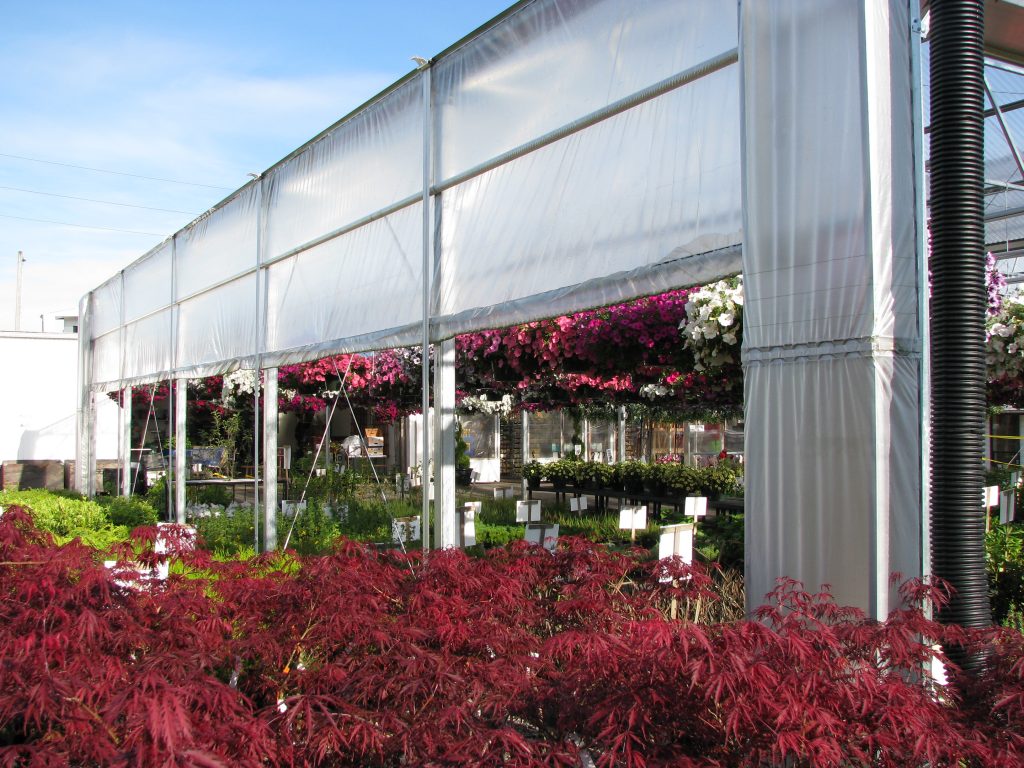Getting Started with Greenhouse Ventilation Systems

Growers choose a greenhouse growing environment for many reasons. Perhaps you use your greenhouse to start seedlings and protect them in their early stages. Maybe you use it to extend the growing season of plants and increase your production or grow plant species that wouldn’t naturally thrive in your growing region. However you use your greenhouse, it’s important to understand the benefits of a natural greenhouse ventilation system.
Greenhouse Overview
Greenhouses are outdoor structures that are used to house and cultivate plants. With poly or glass walls, greenhouses allow sunlight to enter the interior while preventing heat from escaping. This helps to create an ideal growing climate for flowers, fruits, and vegetables, especially in colder regions or seasons.
The Main Issue
As light hits the walls of a greenhouse, some of that energy is absorbed and converted to infrared energy or heat. While infrared energy wavelengths can easily pass through greenhouse walls, their makeup makes it hard to escape once inside. The trapped infrared energy or heat creates warmth within the greenhouse, helping to create optimal growing temperatures. However, if there’s nothing to cool down the greenhouse, the interior temperature will continue to rise and become too high, which will result in scorched crops. When crops suffer, so do greenhouse operation profits.
The Solution
In order to combat rising interior greenhouse temperatures, proper ventilation must be put in place. Greenhouse ventilation design is key to ensuring optimal environmental temperatures for crops. The two types of greenhouse ventilation are natural and mechanical ventilation. These systems both work on the principle of thermal buoyancy, using cold, dense air to push warmer air up and out of the greenhouse.
Types of Greenhouse Ventilation
To choose the right type of ventilation for your greenhouse, it’s important to take an in-depth look at the description and cost-effectiveness of each.
What is Mechanical Ventilation?
In mechanical ventilation, fans are installed in a greenhouse to exhaust the rising hot air. This creates a vacuum that draws cooler air through louvers on the sides of the greenhouse. When properly designed, this type of ventilation can maintain ideal internal greenhouse temperatures even while operating in a variety of locations and weather conditions.
There should be multiple greenhouse ventilation fans installed to provide ventilation at various rates. Ventilation motors should also have multiple speeds to allow for user control of the ventilation rate.
What is Natural Ventilation?
Natural ventilation, or curtain ventilation, uses a series of roof and sidewall vents. As the temperature increases within the greenhouse, hot air also rises and escapes through the roof vents. This creates a vacuum that draws cooler air into the greenhouse through the sidewall vents located closer to the ground.
Curtain ventilation systems allow for air movement across the width of your greenhouse. Since the width is the shortest dimension, the new air will stay cooler than air moving along the entire length of a greenhouse, which is common in mechanical systems.
Since these systems don’t require fans, they are much more energy efficient, helping to reduce operating costs. They’re also easy to automate with climate controls to increase crop yields and labor efficiency.
Why Do Greenhouses Need Ventilation?
Ventilation serves four crucial functions in the growing process: temperature control, improved air circulation, humidity control, and carbon dioxide/oxygen replacement.
1. Temperature Control
Greenhouses accept and trap solar radiation, which causes rising temperatures in the growing environment. Beneficial to a point, temperatures that are allowed to climb too high can be detrimental to plant growth and plant health. Greenhouse ventilation systems allow growers to exhaust excess heat and keep their plants thriving at an optimal temperature.
2. Improved Air Circulation
Plants benefit from breezes in terms of transpiration and cell wall strengthening. Air moving and blending throughout a greenhouse balances temperatures, humidity, CO2, and oxygen, helping to create uniform conditions, which plants respond to better.
3. Humidity Control
Without adequate ventilation, humidity will build up in a greenhouse. Transpiration (evaporation of water from plants) and condensation that occurs naturally as part of the water cycle increase humidity levels within a thermally dynamic structure. High humidity levels in a greenhouse invite pathogens, molds, and fungi that can interfere with plant growth. With an automated ventilation system, humidity control can be achieved by replacing wet warm air with cool dry air as needed.
4. Carbon Dioxide/Oxygen Replacement
Fresh air from ventilation provides plants with carbon dioxide that’s critical for photosynthesis and oxygen that’s required for root growth. A greenhouse ventilation system introduces fresh air and exhausts stale air, increasing the health and quality of your crop. Without ventilation, the air inside becomes oversaturated with oxygen and plant life suffers.
Additionally, ventilation assists with other factors important to healthy growing:
Pollination – In a natural growing environment, plants rely on the wind to spread their pollen. In a greenhouse, ventilation is necessary for plant movement and the release of pollen.
Resistance to Pests – Poor ventilation weakens plants, which makes them more susceptible to pest damage. Improper ventilation also creates humid conditions that are perfect for pests to lays their eggs.
Natural Greenhouse Ventilation or Mechanical Ventilation — Which Is Better?
Cost is one of the main factors that growers use to choose the best ventilation system. While initial set-up costs for either type of greenhouse ventilation system are comparable, the climate controllers and roll-up motors used in a curtain ventilation system consume much less power than fans. This allows for energy-efficient and cost-effective daily greenhouse operations.
The size of your greenhouse is another factor when it comes to choosing between natural and mechanical ventilation systems. In a smaller greenhouse, less than 40 sq. ft., sustaining a fan ventilation system will prove to be too costly. In greenhouses larger than 100 sq. ft., a mechanical system would not have the power to effectively keep both ends of the greenhouse at an optimal temperature.
Seasonally, each of the ventilation types has advantages. In the early spring, a fan cooling system can be especially helpful when you can’t open side curtains due to the build-up of snow on the ground. Meanwhile, after summer harvesting, running a fan in an empty greenhouse to keep your plastic from melting will waste electricity and drive up your utility bill. During those times of the year, natural ventilation allows you to open your curtains, set it, and forget it.
Use this infographic to quickly compare both types of ventilation!

